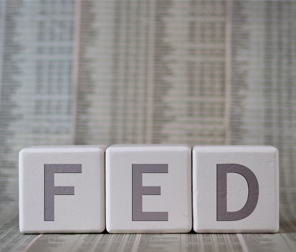The Fed did not cut rates or change its balance sheet policy yesterday, but that hardly mattered. The Fed was dovish in every other way that counts, from the statement to the dots to the press conference. Fed Chair Jerome Powell communicated a clear path for cutting rates later this year, and even leaned into a cut at the July meeting as a strong possibility. The market responded accordingly, with Treasury bonds rallying (led by the 2-year point on the curve), investment-grade credit tightening and the US dollar weakening.
The details of yesterday’s dovish message included the following: The post-meeting statement replaced the word “patient” with a commitment to “act as appropriate to sustain the expansion.” The statement also flagged the decline in breakeven inflation by saying “market-based measures of inflation compensation have declined” (previously these had been characterized as “low”). While the median dot for this year remained unchanged, there were eight FOMC members who anticipated a cut and seven of those eight members anticipated two cuts this year. Powell then amplified the message from the dots in his press conference by saying that even the FOMC members with unchanged dots “agree that the case for additional accommodation has strengthened since our May meeting.” Throughout the hiking cycle the dots were used to guide future hikes. Yesterday that got flipped on its head and the dots were used to guide coming cuts.
Powell began his press conference with an extended discussion of low inflation and the challenges that it causes. Shout out to Mike Bazdarich, whose well timed piece (published on Tuesday!) correctly anticipated that low inflation would in fact be the cause of a Fed ease later this year.
Powell’s remarks on inflation included a very notable shift from the May press conference language, where he dismissed low inflation as “transitory.” In fact, Powell tried to distance himself from his own May comments by saying “Let me say on inflation, it's something I've been concerned about for quite a long time…So, I think you know, we certainly don't want to be seen as weak on inflation, and I don't believe we are.” I’m not sure that’s totally right, and it’s weirdly inconsistent with him admitting earlier in the press conference that breakeven inflation has fallen. Anyway, chirping aside, Powell was clear on low inflation being a rationale to ease policy. Something like this will indeed be the foundation for a cut, when that cut happens.
The Fed Chair further bolstered the logic for a rate cut by emphasizing risk management. The following line was especially striking: “Research shows that it’s wise to react, for example, to prevent a weakening from turning into a prolonged weakening. An ounce of prevention is worth a pound of cure.” This was in the context of his concern that proximity to the zero lower bound limits the amount of policy response, which in turn heightens the desire of policymakers to not have the downturn in the first place. This strikes me as exactly correct. Fed officials are nervous about whether they could do enough in a recession, so much better to avoid having to find out by running policy easier today.
With a rate cut all but set, and a high likelihood of that cut coming in July, the remaining question is whether the Fed will cut 25 or 50 bps to start. Based on yesterday’s news, a 25 bps cut is probably more likely to start. In his dissent yesterday, St. Louis Fed President James Bullard said he would prefer a 25 bps cut. Bullard is the dove on the committee. If Bullard is calling for a 25 bps cut, who would be advocating a 50 bps cut? Moreover, Powell cautioned against overreacting; and the desire to wait for more data doesn’t exactly suggest a Fed that is chomping at the bit to make a bold statement. Finally, “an ounce of prevention” sounds small-ish in size, at least to me. So, I think they start with 25 bps. If the economic data collapses in the next six weeks, or if trade risks escalate, then they have the option to move up to 50 bps, but that’s not the base case at the moment.

